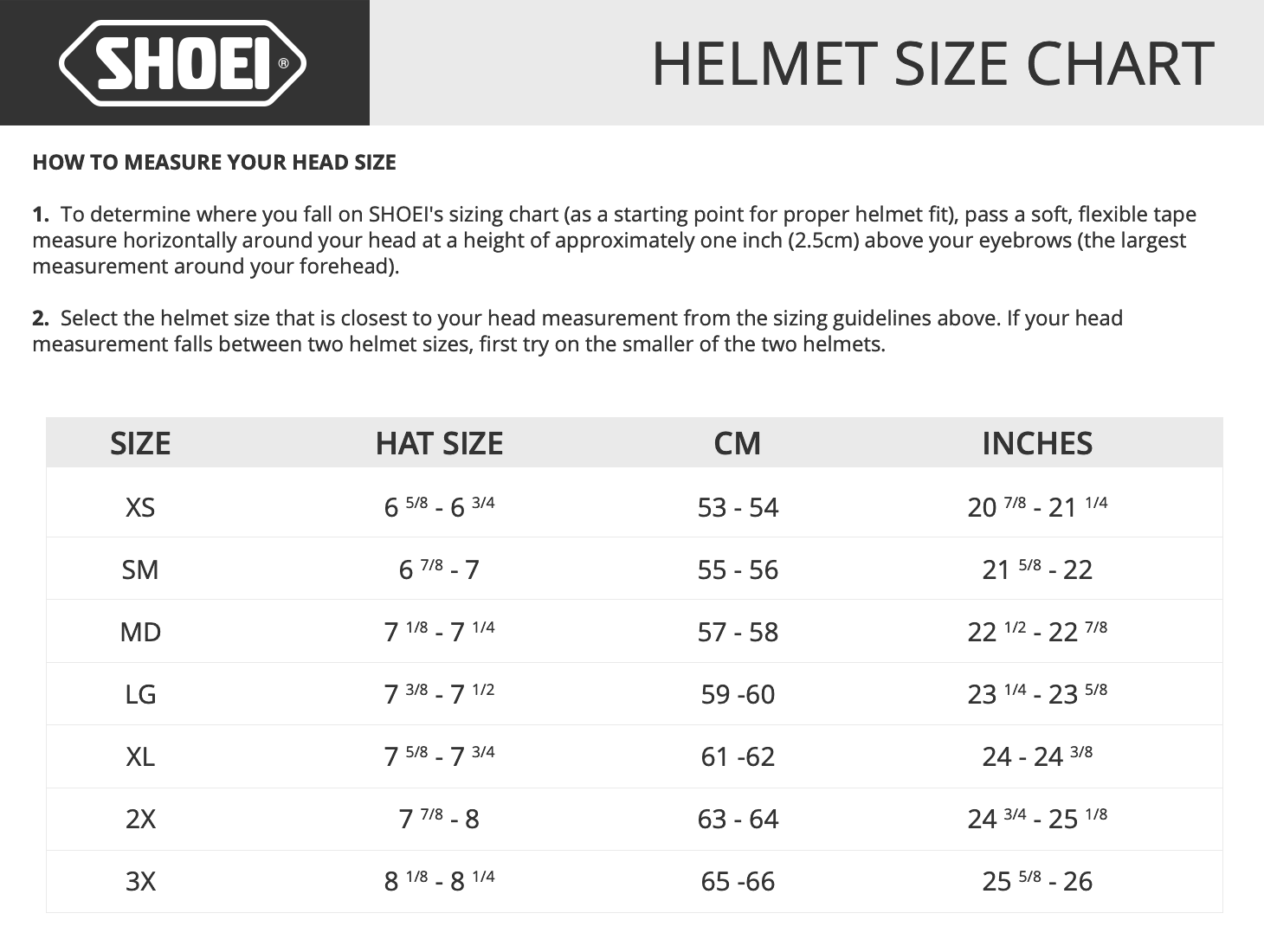Why is proper helmet fitment important?
- Helps improve helmet safety
- Maximizes comfort
- Reduces noise levels and distractions
- Helps keep the helmet on the rider’s head during an accident
- Helps maximize the safety benefits of the helmet
- ***Safety standards (like DOT or SNELL) are valid only for properly fitting helmets
Finding the right size to start with:
- Pass a soft, flexible tape measure horizontally around the head, approximately 1-inch above the eyebrows
- Move the tape measure up and down slightly to find the largest measurement
- Cross reference with the appropriate size chart and select the helmet size that is closest to the measurement
- If the head measurement falls between 2 sizes, then try on the smaller of the 2 helmets first (use the size chart as a starting point)
*ALWAYS refer to the respective helmet’s size chart and instruction manual for proper fit
When the helmet is on, complete these steps:
- Check that the helmet inner lining fits snugly all around the rider’s head
- Check that the top pad presses on the top of the rider’s head
- Check that the cheek pads press against the rider’s cheeks. When opening and closing the mouth, the rider’s teeth should drag along the inside of the cheeks.
Confirm these aspects of fitment:
- Make sure you CANNOT easily slide two fingers into the helmet along the side of the rider’s temple
- With the chinstrap properly fastened, grab the helmet with one hand on each side. Without moving the head, try to move the helmet up/down and side-to-side.
- The rider should feel the skin of the head and face being pulled as the helmet is moved, and it should not be easy to move.
- If the helmet can be moved around easily and does not “grab” the rider’s cheeks, it is TOO BIG!
Signs a helmet is TOO BIG:
- Helmet may “fall” onto the head with little resistance
- Noticeably loose around the crown of the head
- Eyes are located near the top of the helmet’s viewpoint
- Helmet can move independently of the rider’s head, no pulling on the skin when helmet is moved up/down and side-to-side
Signs a helmet is TOO SMALL:
- Helmet will be extremely difficult to put on
- Likely to cause immediate pressure points
- Eyes are likely located lower within the helmet’s viewpoint
Signs a helmet fits PROPERLY:
- Helmet may take some effort to slide over head
- Helmet should fit snugly around the crown of the head, without overwhelming pressure
- Eyes are located in the center of the helmet’s viewpoint
Rotation Tests that must be performed:
STEP 1
- Securely fasten the chin strap
- Place your hands on the back of the helmet
- Try to push the helmet off by rotating it forward
STEP 2
- Place your hands on the front of the helmet
- Try pushing it off by rotating it rear-ward
RESULTS: With the correct size helmet, there should be LITTLE MOVEMENT, and the helmet should stay SECURELY IN PLACE.


